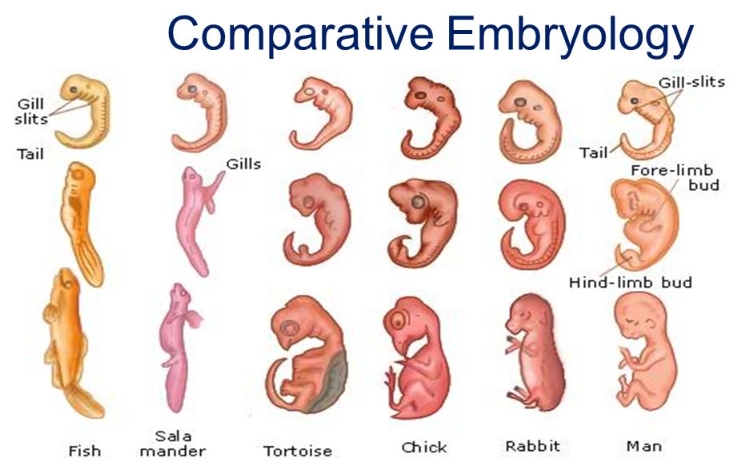Comparison of embryos between species is known as comparative embryology. It is likely that embryos share a common ancestry if they have similar characteristics. There is a gill slit and a tail on all vertebrate embryos, for example. Figure 9.3.4 shows all of the embryos, except for fish, have their gill slits and tails removed by adulthood. The tail bone is the only part of the tail that remains in humans. Consequently, organisms might not share similar characteristics once they reach adulthood. Comparing organisms at the embryonic stage is worthwhile for this reason.
Comparative Embryology

Embryology: Study of embryos and the development of them in biology.
Comparative Embryology: Embryos from different species are compared and contrasted with the goal of proving that their ancestors shared a common ancestor.
Evidence from Living Species
Living species provide scientists with valuable insights into evolution. Modern organisms can be studied by comparing them with their anatomy, embryos, and DNA.
See Also:
- The function of the Matrix in the Mitochondria In Biology
- What is Cell With a Membrane & Nucleus
- Different Types of Molecules Which explained with Examples
- How far the electron microscope, increase the structures and functions of the organs?